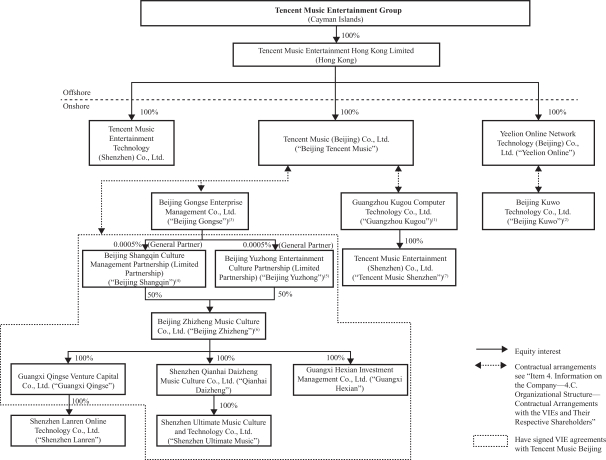Free signup for more
- Track your favorite companies
- Receive email alerts for new filings
- Personalized dashboard of news and more
- Access all data and search results
Content analysis
?| Positive | ||
| Negative | ||
| Uncertain | ||
| Constraining | ||
| Legalese | ||
| Litigous | ||
| Readability |
H.S. sophomore Avg
|
|
New words:
Acapella, Actoz, amassed, Analyst, anda, Angela, apparent, appealingin, architecture, archival, archive, art, asQQ, assetsthat, assumption, asWeixin, Atlantic, atLazy, AtTMELAND, automotive, avatar, Battle, bearing, betweenWeSing, birthplace, blockbuster, bullet, byWeSing, CAC, carefully, carnival, carriage, celebrate, celebrating, CEO, ceremony, chain, chance, CIFH, CII, CIIO, Communist, companionship, comparison, complaint, compliant, complicated, conclusion, Conclusive, Condensed, conservancy, contact, contemplated, contributedby, contributor, Cracking, Cup, Daizheng, dance, debut, Dece, destroyed, DEXTER, directorsupon, Disciplined, diversification, domicile, Dragonstone, driver, ed, Elder, emoji, emotional, establishWeSing, EURONEXT, Eve, exact, exam, exceptWeSing, exited, familiar, fantasy, fast, FIL, fileno, fill, FIYTA, flocked, forWeSing, Gaoxin, geopolitical, Guangdong, Guangxi, headroom, Heart, heroic, Hexian, Honour, hypothetical, idol, includedQQ, includingKugou, includingQQ, includingWeSing, inline, inQQ, inquiry, installation, integratedKuwo, intermediary, intoQQ, IP, IPs, Jackson, Japan, Kejizhongsan, Kexing, kilometer, king, launchedKuwo, launchedPutong, livelihood, Lonely, Luminn, Luo, macro, maliciously, mber, meaningful, middleware, mimic, minimalistic, mode, moderate, Multivariant, Musi, namelyQQ, NaN, NBA, necessity, Neo, neutral, nonexclusive, notable, offerLazy, offerPutong, offerQQ, ofKugou, ofKuwo, ofQQ, omitted, onKugou, onQQ, onWeSing, operatesKugou, operatesKuwo, operatesLazy, orQQ, OurFriend, ourKugou, ourKuwo, ourLazy, ourLeap, ourqq, pattern, Phase, PK, Planet, platformLazy, Plc, Pokekara, posing, possession, presentedElegant, pressure, presumptive, processor, Qingse, rankingpari, recogniz, referenced, refinancing, repatriation, Repealing, repertoire, resonate, resort, Russia, scenario, score, scoring, scrutinized, Senate, sharpen, shipment, shortly, shyest, signal, Silver, simply, smooth, Snow, societal, Soft, solo, solvent, soundmoji, straightforward, stranded, Stride, superseded, supervisor, swipe, Sword, systematic, systematically, theme, theQQ, theWeSing, throughFanxing, till, TMELAND, toWeSing, transportation, umbrella, Underpinned, underTME, unexpected, Union, unlock, upgradedWeSing, upstream, vacancy, versatile, Vibe, vibrancy, Vicetone, videolization, vivid, water, WhileQQ, withinQQ, withinWeSing, Yi, Yuan, Yueting, Zhang, Zhu
Removed:
aggregated, alternate, architect, bad, designee, developer, Ding, empowered, expansionary, expectation, foreclose, Gang, George, grew, Hau, headset, homepage, Hubei, improvement, lessor, LSE, Ma, marketability, Matsunichi, Midwest, negotiate, optionee, Oracle, ORCL, outset, overload, partly, Qzone, rebranded, retailer, Sang, Sendmail, Sony, Survey, Tabular, Tak, Tao, Tong, tranche, uninterrupted, uniquely, unwind, USD, Viper, WACC, Winnipeg, Xiangyue, Xiudong, Yangtze, Yeung, Zhongde
Filing tables
Filing exhibits
- 20-F Annual report (foreign)
- 4.35 EX-4.35
- 4.37 EX-4.37
- 4.38 EX-4.38
- 4.39 EX-4.39
- 4.40 EX-4.40
- 4.41 EX-4.41
- 4.44 EX-4.44
- 4.46 EX-4.46
- 4.48 EX-4.48
- 4.50 EX-4.50
- 4.53 EX-4.53
- 4.55 EX-4.55
- 4.57 EX-4.57
- 4.59 EX-4.59
- 4.62 EX-4.62
- 4.64 EX-4.64
- 4.66 EX-4.66
- 4.68 EX-4.68
- 4.74 EX-4.74
- 4.75 EX-4.75
- 4.76 EX-4.76
- 4.77 EX-4.77
- 4.78 EX-4.78
- 4.79 EX-4.79
- 4.80 EX-4.80
- 4.81 EX-4.81
- 4.82 EX-4.82
- 4.83 EX-4.83
- 8.1 EX-8.1
- 12.1 EX-12.1
- 12.2 EX-12.2
- 13.1 EX-13.1
- 13.2 EX-13.2
- 15.1 EX-15.1
- 15.2 EX-15.2
- 15.3 EX-15.3
- Download Excel data file
- View Excel data file
Associated TME transcripts
TME similar filings
Filing view
External links


